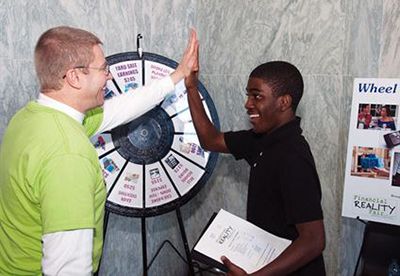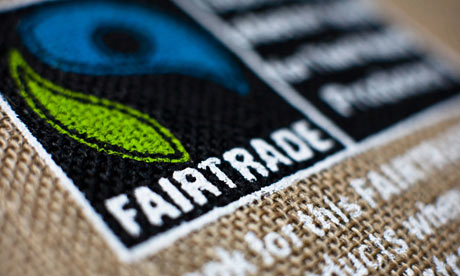 Interactive financial literacy fairs for high school students in Connecticut are putting Principle 6 in action. Credit Union Cause Strategies published this article:
Interactive financial literacy fairs for high school students in Connecticut are putting Principle 6 in action. Credit Union Cause Strategies published this article:
In the past five years, nearly 18,000 high school students from 80 schools have participated in what has become the signature financial education program for Connecticut credit unions—the “reality fair.” Organized by volunteers with the Financial Reality Fair Foundation and the Credit Union League of Connecticut, a financial reality fair is an opportunity for students to experience the challenges and rewards of making good financial choices based on starting salaries and expenses.
Financial counselors instill the importance of planning and saving, while students complete a budget sheet requiring them to live on their monthly salary and pay for basics such as housing, utilities, transportation, clothing and food. Throughout the fair, there are many opportunities for additional spending, and students must learn to balance their wants and needs to live on their own.
“Financial reality fairs are extremely powerful,” said CU League of Connecticut President and CEO Jill Nowacki. “The feedback we get from students is that the experience is fun, but it’s also eye-opening and has a lasting impact as they start their adult lives.”
Throughout the state, some 150 credit union employees contribute their time and expertise to reality fairs.
“We’re seeing the cooperative principle of working cooperatively in action,” Nowacki said. “Working together to help these students and create more educated consumers, credit union staff and executives get to know one another as ‘cooperators’ rather than potential competitors. That strengthens credit unions as a whole and increases the benefit to their communities.”
The league donates staff time to administering the program, as well as helping the foundation raise money to cover the costs of the reality fairs. At between $12 and $14 per student, the price tag for reality fairs—even with all the contributions from volunteers—can really add up. Credit unions and their members participate in foundation fundraisers such as silent auctions, raffles and golf tournaments to support the fairs. The league is also exploring opportunities for funding outside credit unions with grants for financial education programming, Nowacki said.
“There is a huge opportunity for credit unions to offer the reality fair experience to every high school student. We’re working to do that here in Connecticut, and actively support that effort across the country and internationally,” Nowacki said.
In the cooperative spirit, Connecticut’s Financial Reality Fair Foundation has helped set up reality fairs in Trinidad & Tobago and in Washington, D.C. Other states utilize Connecticut’s methodology and materials for their own reality fair programs.
Nowacki credits the growing success of the financial reality fairs to the leadership of the foundation’s board of directors.
“The board is very hands-on, and that’s what makes it all work,” she said. “They establish relationships with schools, solicit volunteers, develop curriculum and help with logistics. Through their commitment and efforts, Connecticut’s credit unions are helping high school students learn important lessons for a lifetime of financial stability.”


